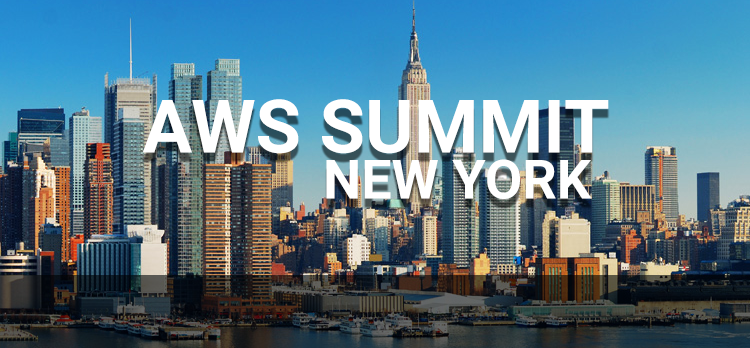
The extremely customizable cloud computing service provider, AWS has the potential of being the era defining cloud service provider. In a brief period of time it has envisaged an extremely trusted and rapidly expanding cloud infrastructure within its reach—a league which is further growing and dominating the computer and IoT market. It is through these defining parameters that one can easily foresee the tremendous change in cloud computing, dominated by AWS. Unlike its contemporary kinds, AWS aims at greater affordability, customization and “get what I want!” forces of the modern day market.
Market Expansion to Battle Competition
With the blasting expansion of digitalization and IoT (especial thanks to smartphone industries), the area of cloud consumption is indeed vast; vast enough that it can and will support the competitors. But, given that the consumer’s discretion is wise, one would opt for AWS at least for a trial, which seems, will be appealing enough to the consumers to embracing it forever. Other competitors are also well equipped, though. Long-tail cloud use cases that AWS won’t optimize and will continue to spring up. Today’s long-tail use case may be the size of the entire 2017 cloud computing market 10-12 years down the line: Google, Digital Ocean, Microsoft are well positioned to pick up what Amazon is proud to offer. But, as far as “need of the hour” is concerned, AWS has a better edge over these competitors.
With its expanding wings where AWS has already shook hands with Nokia for 5G, IoT and cloud services, it is further attracting attention and trust of the cloud consumers/service providers. People are willing to collaborate with AWS due to the gravity built around it. Apart from the goodwill privileges, AWS also readily caters to the modern day needs of cloud services. It allows its customers to have at their disposal a full-fledged virtual cluster of computers, available all the time, through the internet. Therefore, with its doubly tightened bow, AWS Cloud Services will surely overshadow its counterparts and expand its reach as the time progresses.
AWS Competitive Market Strategies
In a practical sense, any company won’t need more than one server until it has users it cannot accommodate. But, in consideration of cost reduction, one might as well rethink over maximizing the profit margin and that’s where AWS will stand high and apart. Having the low margin monopoly in its DNA, Amazon will sweep away the wandering expensive service providers. In the flux of growing enlightenment vis-à-vis cloud computing and its abounding expenses, likewise companies will obviously cut down their cost too to battle the competition, but to what end? They also have to keep up the brand value (as it has been so far carried). They offer services, which AWS also offers, at relatively higher prices. In the event, ultimately the consumer will be benefitting due to the cut throat competition and search of market domination. The prices will be marred down so low that cloud services become cheaper than internet connection. Had the infrastructure not been this wide, with this kind of demand that we see now a days, the same consumers would be facing crisis instead.
Even with respect to its service delivery, AWS stands higher than its counterparts due to its affordability, efficiency and trust. The success of AWS will depend on bringing the center of data mass onto AWS for transactional data. Besides that, other factors such as going up the application stack strategically will also help AWS climb the ladder of success. If the future cloud computing infrastructure demands what AWS is already offering, then it will be highly unlikely for other budding competitors to match steps with the success that AWS would have gained by that time.
Ground Realities of the Market
AWS is safer, cost effective and efficient as compared to its corresponding competitors. Google has proficiency over machine learning (part that defines it is putting greater efforts in machine development than cloud betterment) while Microsoft is good at solving nearly only 80% of the cloud computing needs and problems. So, while AWS brings exclusivity in its approach, it becomes sensible to think of it as a master of the arena. Every firm has its specialty in something and AWS has its in cloud computing. With proper grip over safety, affordability and reliance, AWS Cloud Services will continue to exhibit its mastery over cloud computing in the coming years.
Cloud computing is a sticky business—one has to keep continuing unless something very unfortunate happens and the company/individual has to switch to some other company. AWS delivers a promising cloud service that is capable of lasting with you for the lifetime. You won’t have to spend years and millions of dollars over inter-cloud transfer for AWS Cloud Services will not award you with any discouragement. It will let you keep your customer relation intact and blooming through its seamless services, acquiring its own success, thereby.
Related Stories
AWS Lambda Serverless Computing
Top 10 Advantages of Cloud Computing Security
Everything you Need to Know About Docker on Amazon ECS
Amazon’s Tryst with the Cloud Market Determines its Revenues Trending



 Building your career and excelling in it is one’s own prerogative. If you are someone with a technical bent of mind, then you would love to know about the AWS certification. In order to excel in AWS and pursue a career laden with the benefits of AWS, you should be well certified, to ensure that you are always on top of your game.
Building your career and excelling in it is one’s own prerogative. If you are someone with a technical bent of mind, then you would love to know about the AWS certification. In order to excel in AWS and pursue a career laden with the benefits of AWS, you should be well certified, to ensure that you are always on top of your game. 
